
Looking to use SMS for business to either message your existing customers or attract new ones? You’re probably wondering how to set up a text messaging service for your business. In this article, we’ll demystify business SMS, explain how to get an SMS number, how to messages your existing customers as well as how to find new ones.
What is SMS?
Is there anyone out there who hasn’t used SMS? It’s possibly the most prevalent form of communication. With over 65% of the world’s population using SMS, the technology is going strong 28 years after its invention.
Although the concept of SMS dates back to 1984, the first text was sent in 1992. SMS hasn’t evolved much technologically since then. An SMS travels via cellular network to a nearby cell tower, then to a carrier’s SMS Center.

The carrier resends that message to the cell tower closest to the recipient and finally to the recipient’s phone. If the phone is switched off, the carrier will store the SMS and forward it when the recipient becomes available.
SMS is quite old technologically and has several limitations that make it somewhat unideal in today's world. These limitations include the infamous 160-character limit, the lack of support for rich content, and the inability to send a WiFi internet connection.
MMS
To solve some of these issues MMS came as an update with a richer messaging experience. It allows you to send multimedia content, instead of just text. MMS is commonly used to send pictures, but also able to send audio and video files.
The world's first full-scale MMS service was launched in 2002 by Westel. Not only was this a major milestone for the telecom industry, but it opened up a wide range of additional marketing opportunities for businesses.

MMS campaigns are more engaging and have a higher opt-in rate than SMS. MMS content is also 8 times more likely to be shared by customers. Best of all, each MMS allows 1,600 characters. That's ten times the number of characters allowed for SMS!
While MMS has overcome some major drawbacks of SMS, it still lacks the core features of modern messaging apps like read receipts, typing indicators, stickers and location sharing.
RCS Messaging and iMessage
To compete with feature-rich messaging apps, carriers have become incentivized to improve SMS in the form of Rich Communication Services (RCS). Although the idea of RCS came from various carriers in 2007, Google took charge of its rollout in 2019.
Sadly, RCS is a next-generation texting protocol for Android and isn’t compatible with iOS. Although it does have the features expected from modern messaging apps, except encryption. Google's interest and in RCS likely stemmed from the success of iMessage.

iMessage was launched in 2011 on all iOS devices, with the same features as modern messaging apps including end-to-end encryption. iMessage for business, known as Apple Business Chat even allows users to make purchases directly in iMessage.
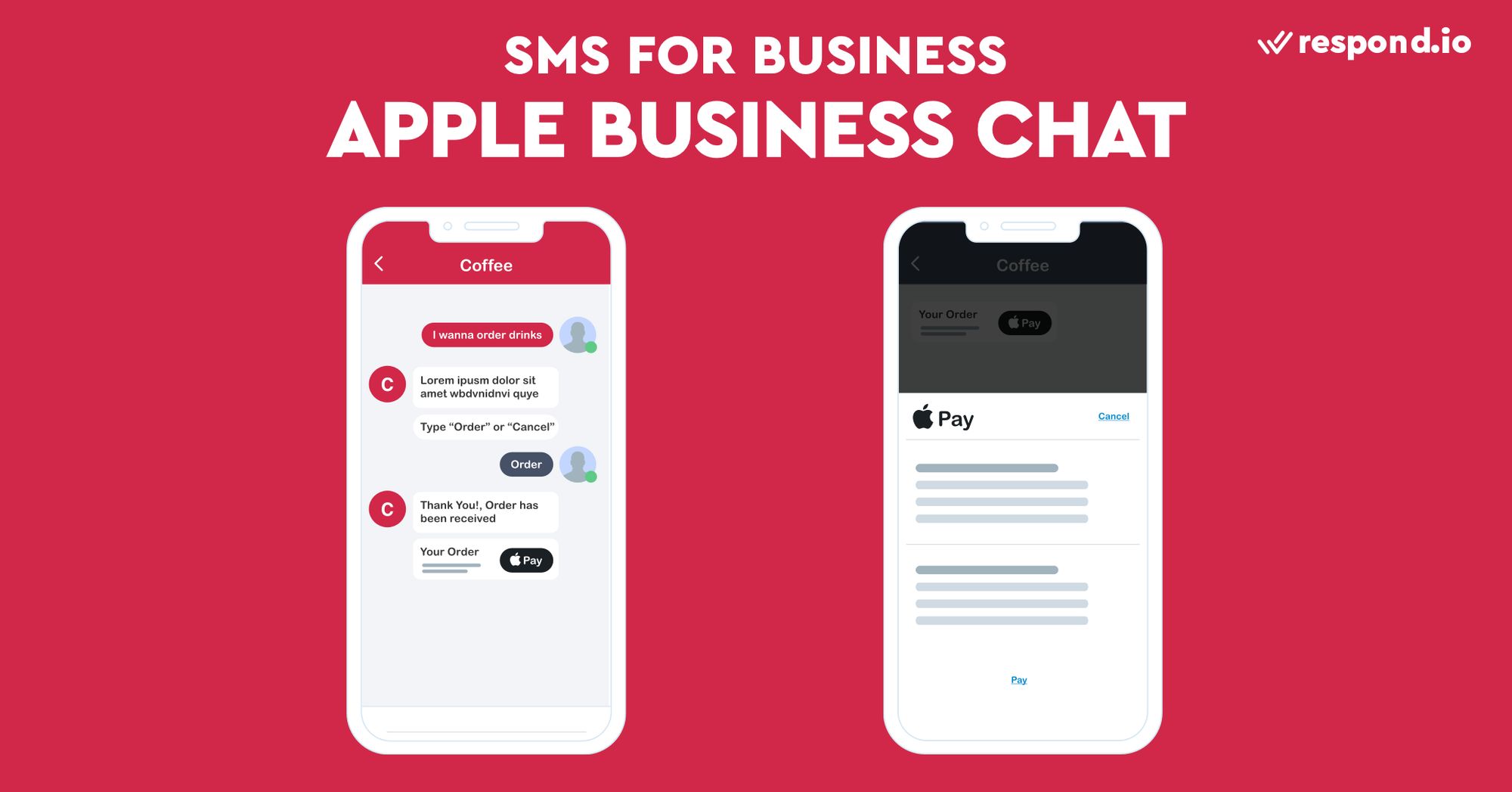
However, neither RCS nor iMessage work across both operating systems. This is perhaps why business use of iMessage and RCS may never achieve the ubiquity of Business SMS.
Is SMS Still Popular?
Yes, unbelievably so. Anyone in the world with a mobile phone can receive an SMS. And today’s 5 billion SMS users are predicted to grow to 5.9 billion by 2025. China and India have the most SMS users with 1.1 billion and 730 million respectively.
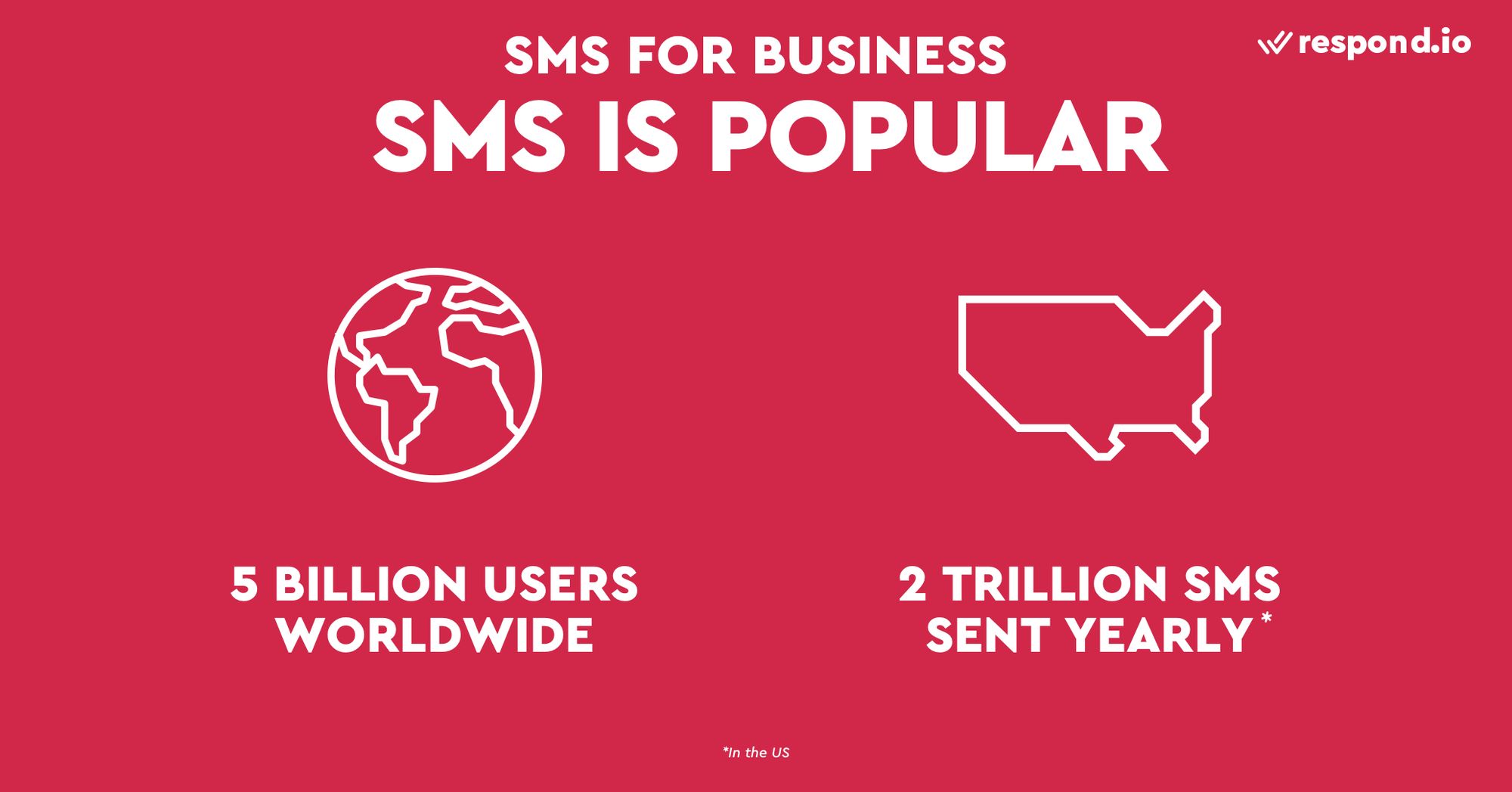
Last but certainly not least SMS has an unbeatable open rate of 98% with an astonishing click-through rate of 40%, dwarfing emails paltry 2% click-through rate. This level of reach and open rates make SMS an amazing communication tool for businesses.
SMS Business: Numbers & Providers
If you’re a company considering using SMS for business the two biggest decisions you’ll need to make are the type of number you want for your business and the company which will provide SMS sending capabilities.
SMS Business: Numbers
There are four main types of numbers alphanumeric ID, long code, short code and toll-free numbers. The best number for your business will largely depend on your use case.

Picking the wrong type of number for your company may result in suspension or even termination. Below we’ll discuss each SMS number option in terms of format, use case, and price. We’ll also show you how to apply for a business SMS number.
Alphanumeric ID
Alphanumeric IDs are perfect for governments or businesses looking to send 1-way notifications from a highly recognizable number. The downside is Alphanumeric IDs cannot receive direct replies.
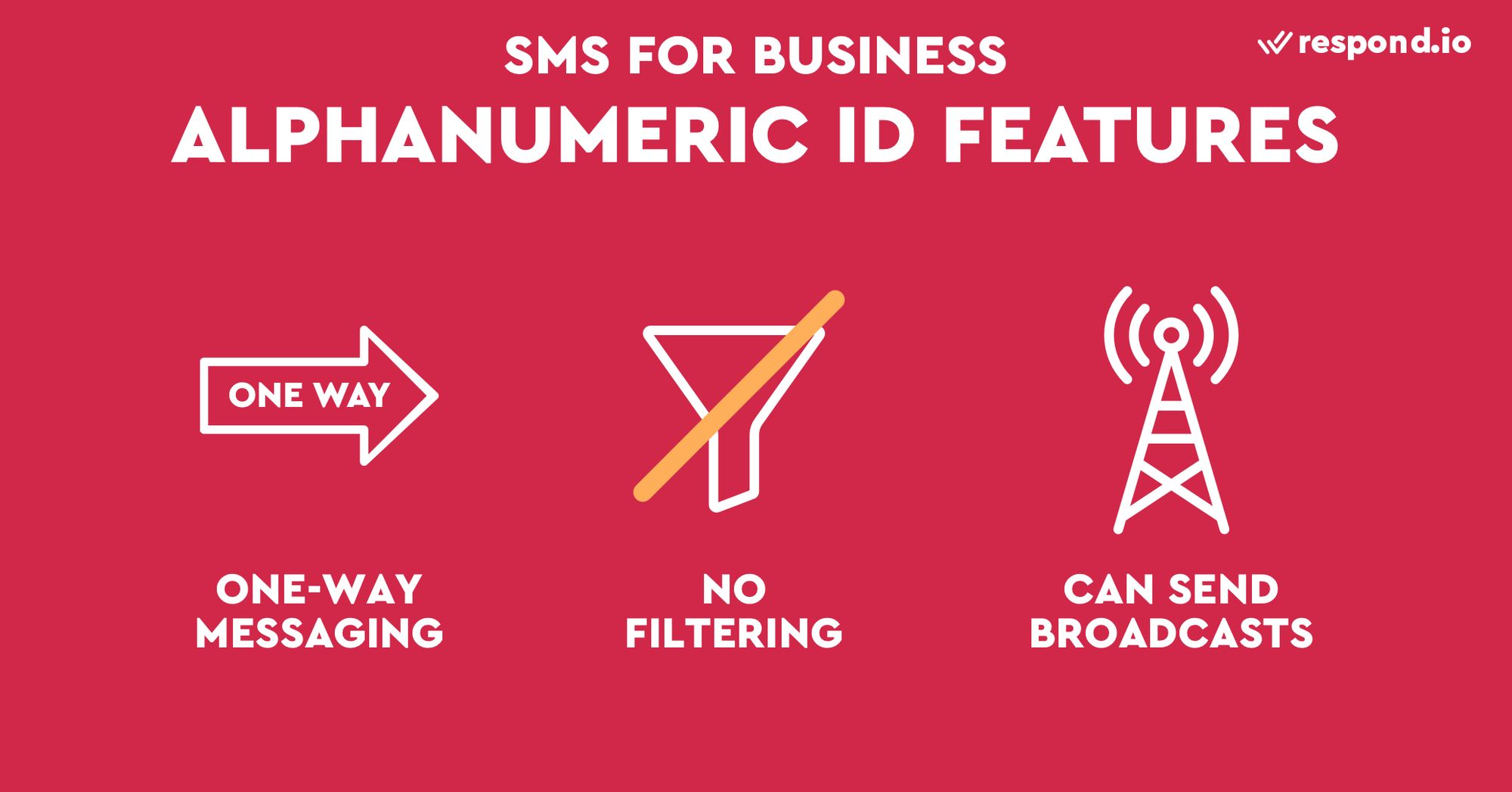
This makes Alphanumeric IDs perfect for sending broadcast messages like mass alerts, verifications, and notifications. Keep in mind, carriers generally don’t allow messages with gambling or adult content.
Alphanumeric IDs contain up to 11 letters or numbers. At least one letter is mandatory, while special characters are not allowed. SMS providers in most countries activate this number type instantly, some countries require additional business documents to apply.

In most cases, Alphanumeric IDs don’t have any additional charges aside from SMS messaging fees. However, some countries do charge an extra fee monthly, per-SMS usage fee or setup fee to use an Alphanumeric ID.
Short Codes
Short Codes are 5 to 6 digit numbers are shared or dedicated to your company. Short Code applications go through a rigorous vetting process making them least subject to filtering by carriers. Short Codes have the highest deliverability among numbers.
Shared Short Codes are suitable for companies sending outbound SMS. Whereas a dedicated Short Code is needed for 2-way messaging.

With their high deliverability, Short Codes are ideal for sending marketing, notification, alerts, one-time passwords (OTPs), and two-factor authentication messages. Or generally any critical communication between companies and customers.
Although Short Codes cannot be purchased, they can be leased quarterly or annually. Generally, you’ll need to submit an application and pay upfront for the number on top of regular SMS fees. The approval process usually takes 8 to 12 weeks.
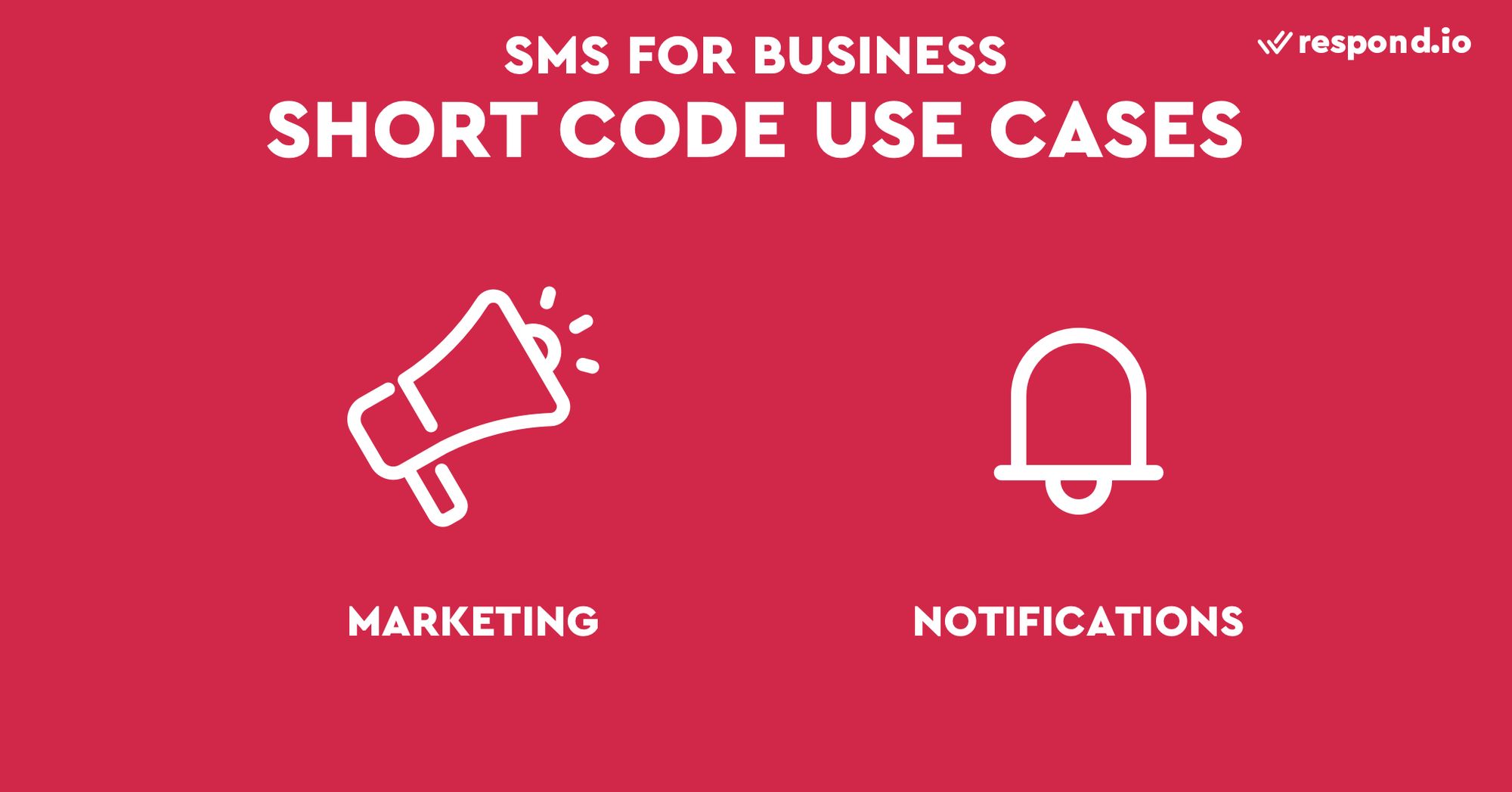
Having the highest delivery rate, Short Codes are the most expensive type of number. In the US, businesses need to pay a one-time setup fee of $650, a quarterly lease payment ranging from $1,500 to $4,500, and a per-message usage fee of $0.0075.
Long Codes
Long Codes are standard 10-digit phone numbers that are usually also voice capable. This makes long codes ideal for customer service over business SMS. Allowing companies to have one point of contact.
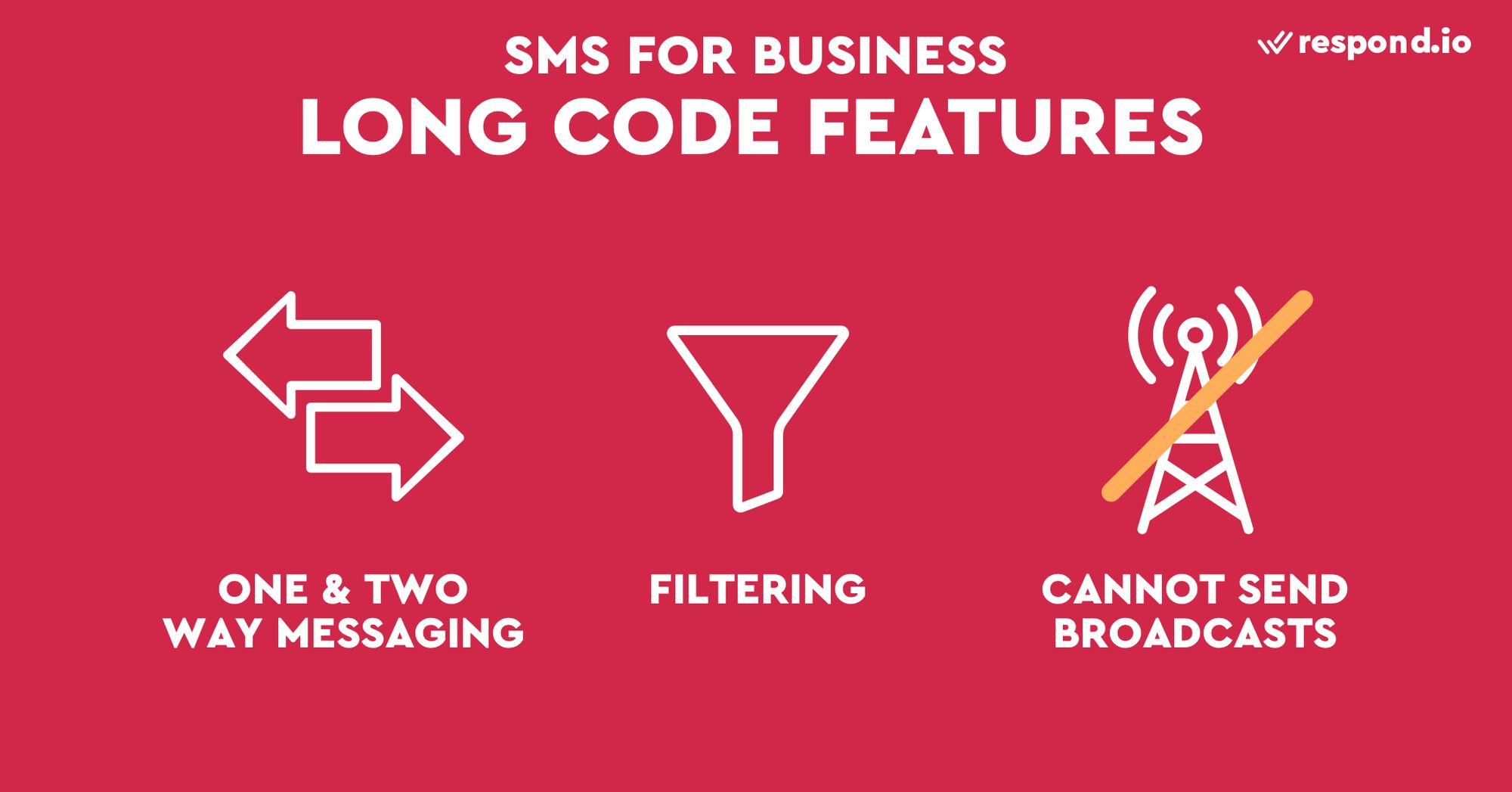
Long codes cannot be used for broadcasting because messages are filtered by carriers. Filtering works like email filtering systems. It looks at the content and volume of messages to ensure compliance with local regulations and carriers’ policies.
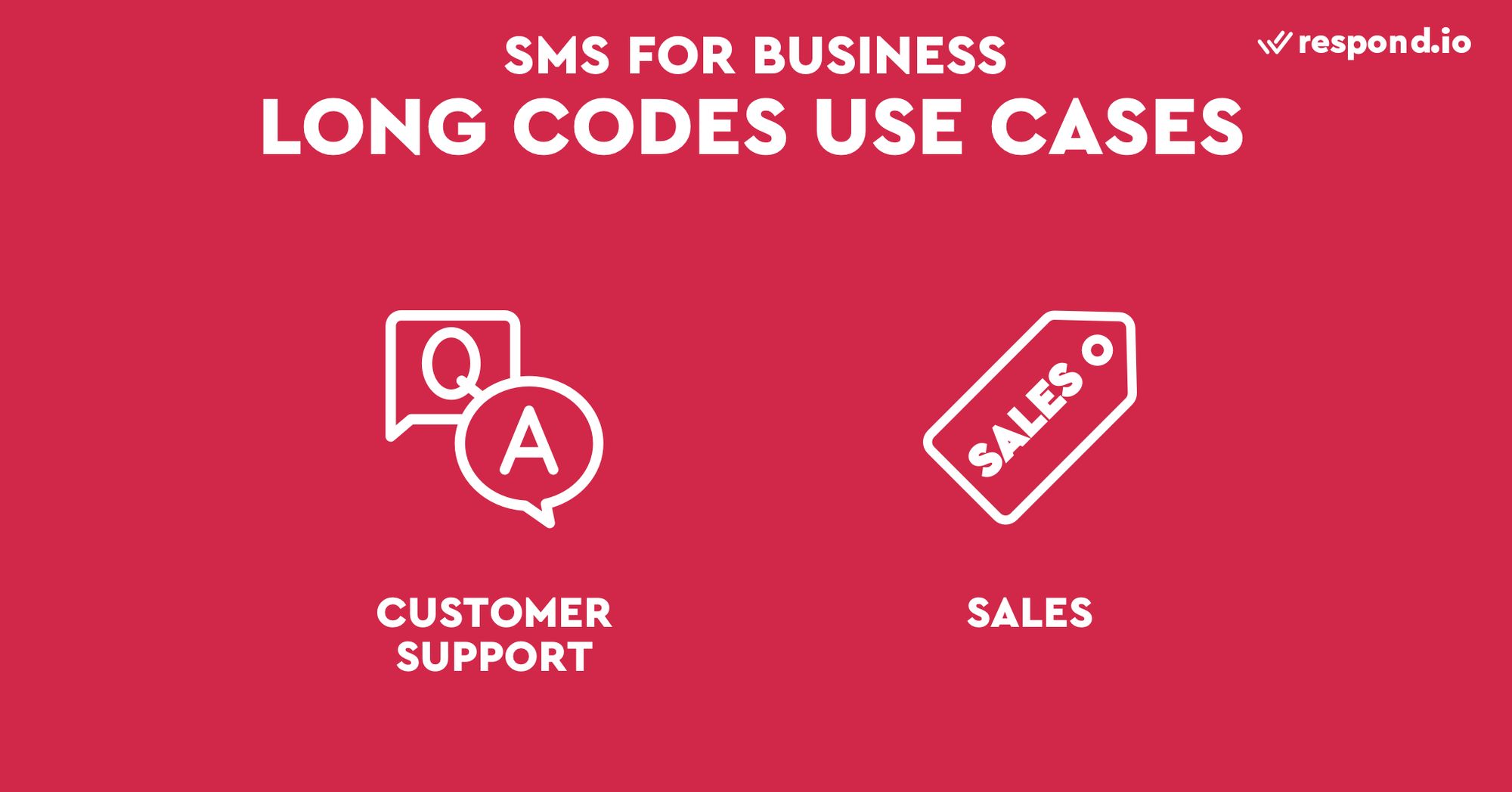
Long codes are the cheapest option out of the four numbers. There are two price determinants for long codes, including a monthly lease payment of $1.00 and a usage fee of $0.0075 per message.
Toll-free Numbers
Like Long Codes, Toll-free numbers have 10-digits but start a 1-800 prefix. Because they are much cheaper than long codes, they are a great option for businesses that need broadcasts. The number can also be customized to spell a name like 1-800-FLOWERS.
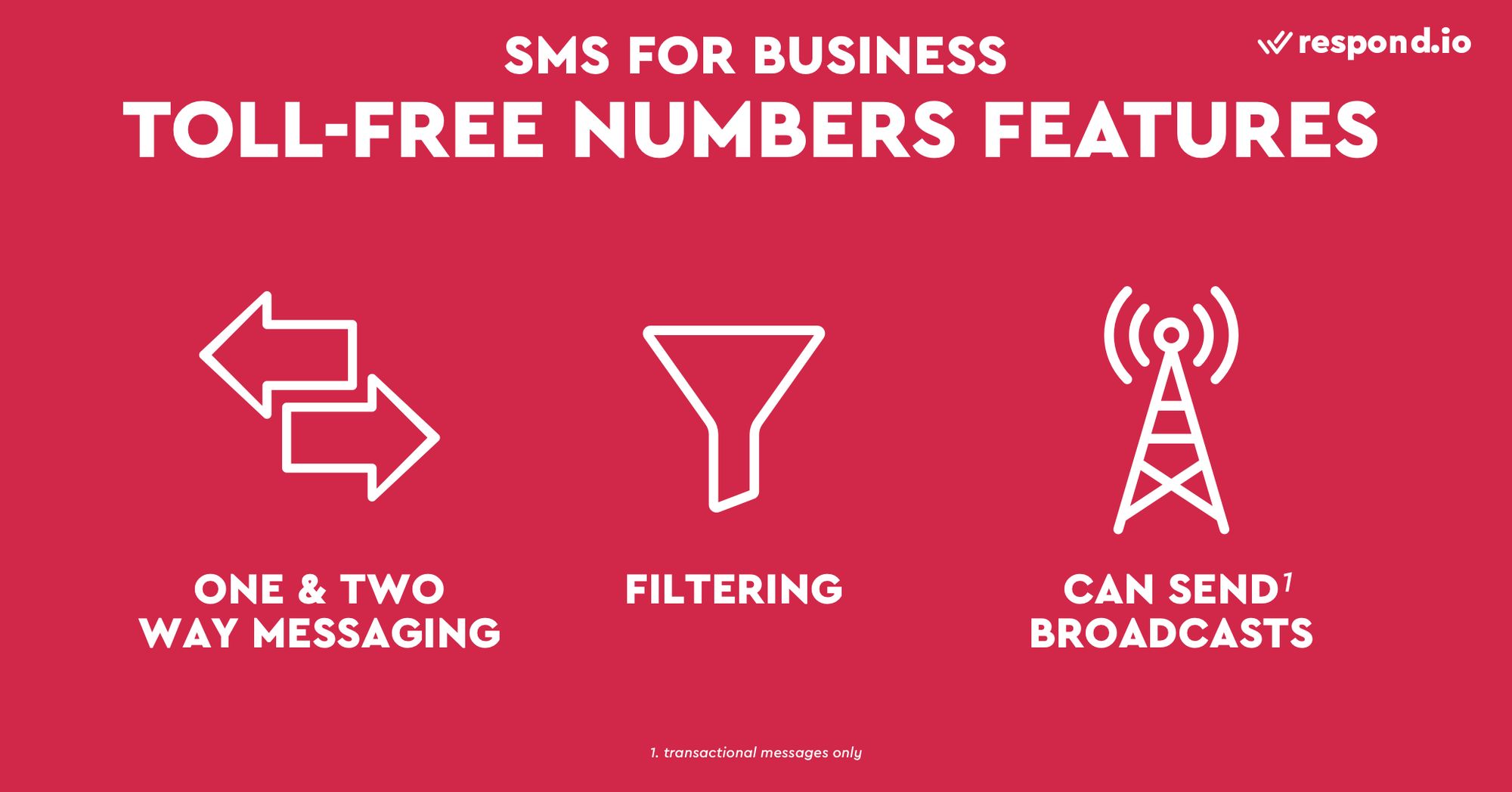
Toll-free numbers are the most versatile type of number. They work well for both broadcast and 1:1 communications. Its use cases include account alerts, notifications, OTPs, verification codes as well as customer support and sales.
In some countries, toll-free numbers are not allowed to send marketing SMS. Sending promotional SMS from a toll-free number may result in carrier filtering and delivery failure.
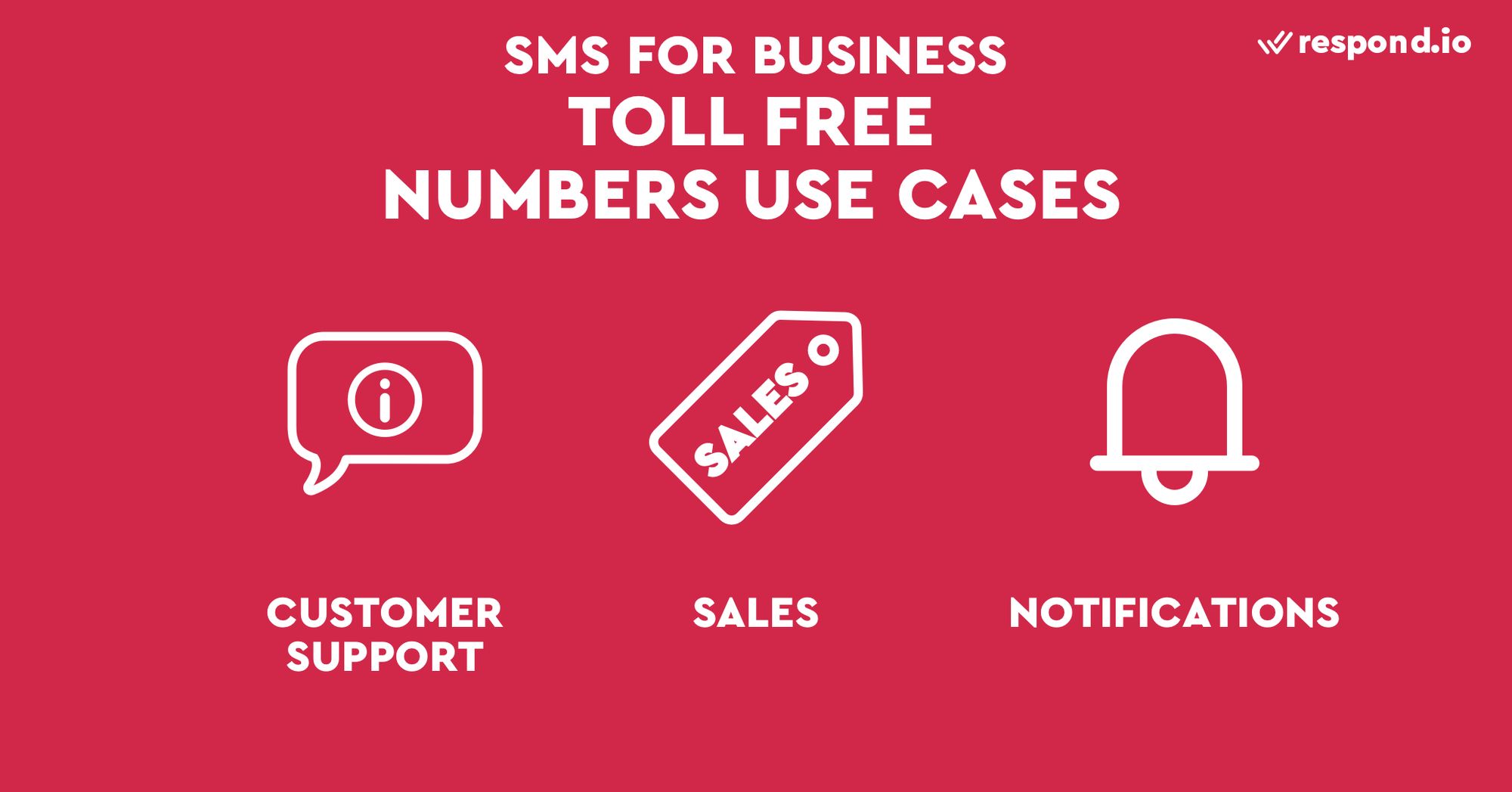
Toll-free numbers are slightly pricier than Long Codes, but relatively affordable compared to Short Codes. The total price includes a monthly rental fee of around $2.00 and a usage fee of $0.0075 per message.
SMS Accounts: SMS Providers
Since SMS infrastructure is decentralized among carriers across the world, creating in house SMS capabilities would require various carrier partnerships and be time-consuming to build. SMS providers remove this hassle and make it easy to get started.

There are tons of SMS providers to choose from, two popular ones are Vonage and Twilio. They provide phone numbers and sending capabilities in many countries. Allowing businesses to send and receive SMS messages via API.
There are many SMS providers out there to choose from. You should evaluate partners based on their pricing, phone number availability, and geographic reach. Generally, if you are looking for a cheaper partner you may want to explore local alternatives.
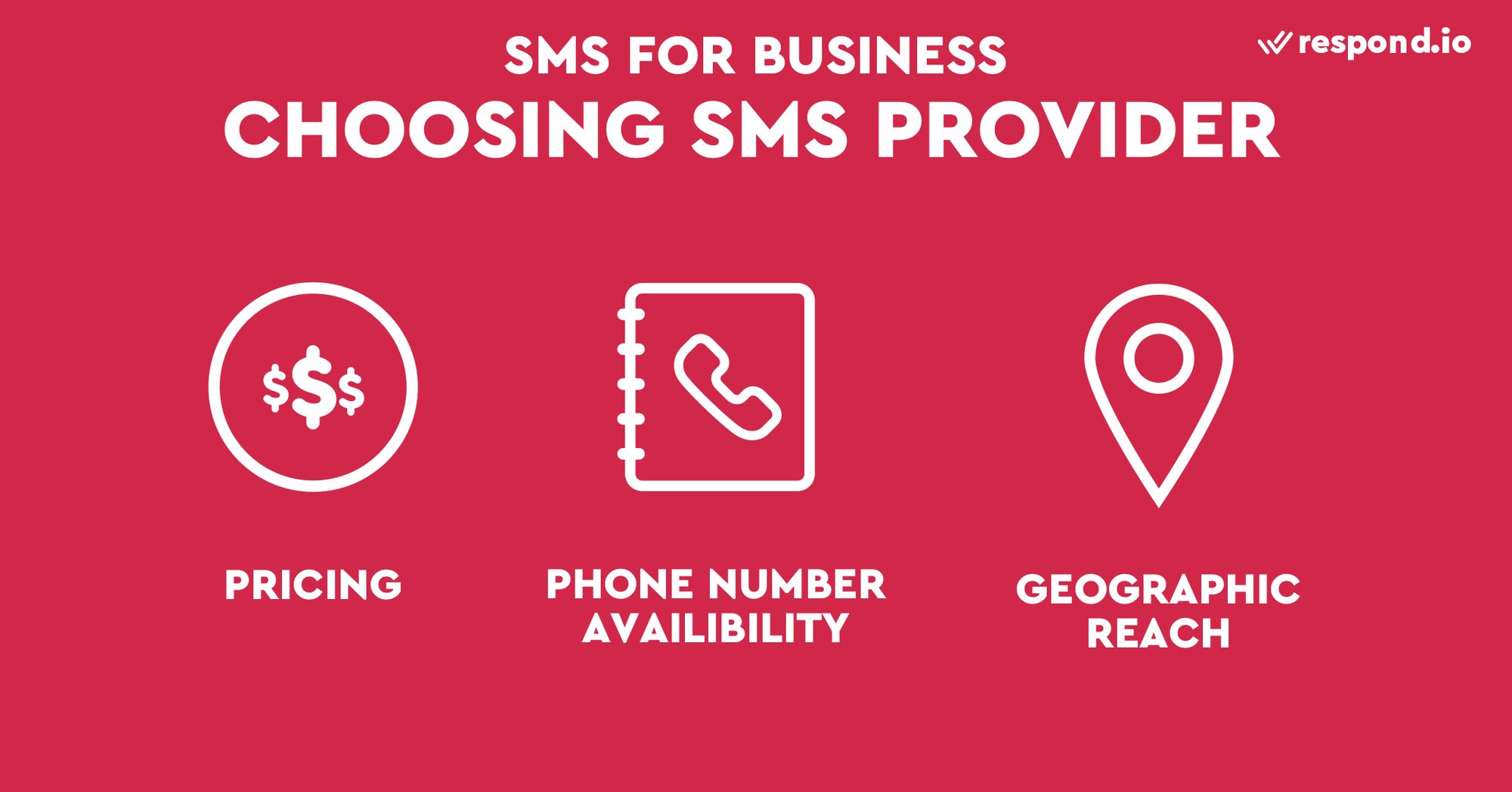
One of the easiest SMS Partners to get started with is Twilio. They have phone numbers available for many countries, with reach around the world. Their per message billing system makes it inexpensive to text if SMS is right for your business.
How to Get a Twilio SMS Account
To start creating a free trial Twilio SMS Account, head to this Twilio page.
1. Fill up the form. Enter your name, email and create a password.
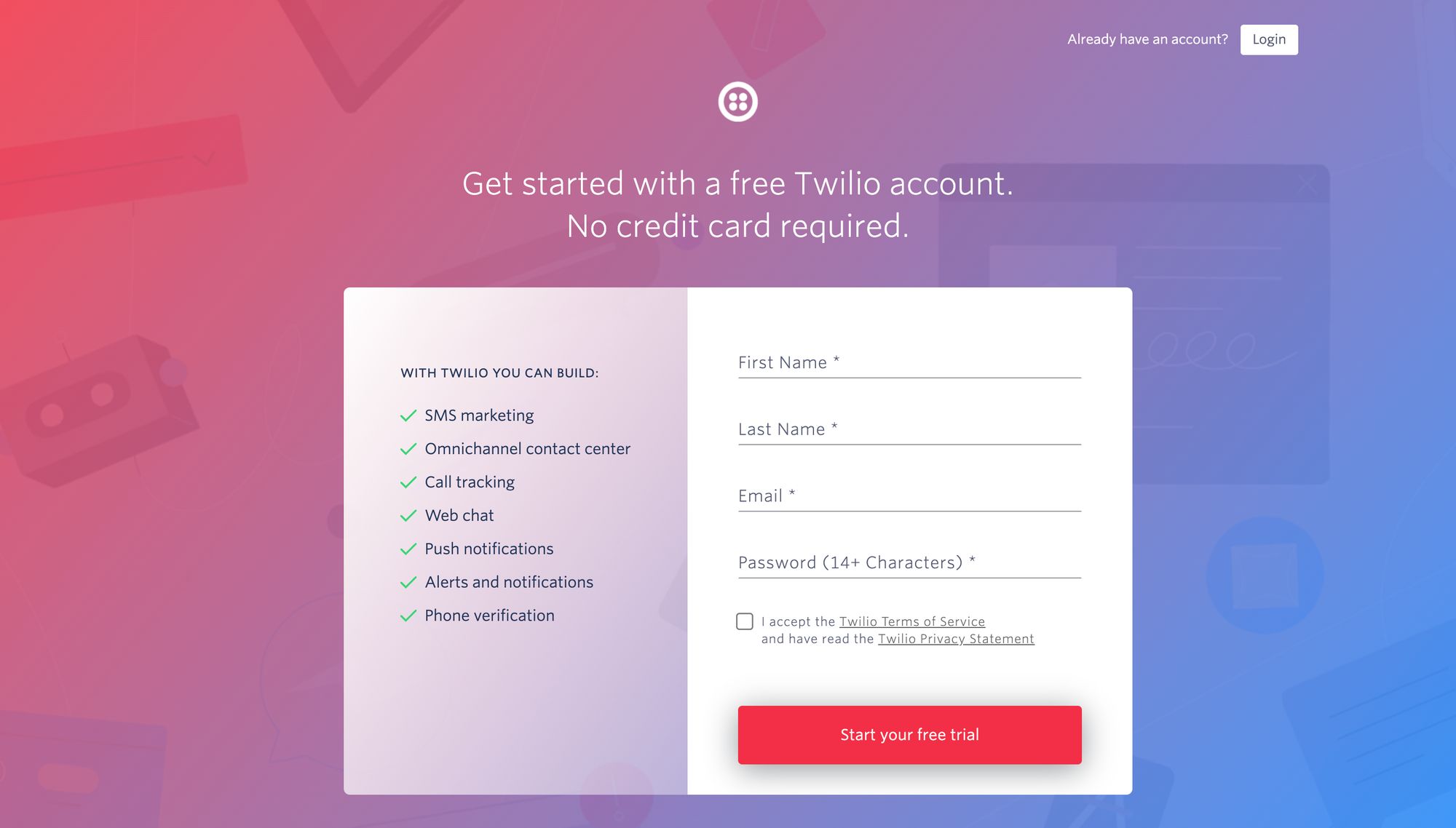
2. Verify your details. Click the confirmation link in the email. Then, enter your phone number and verification code.
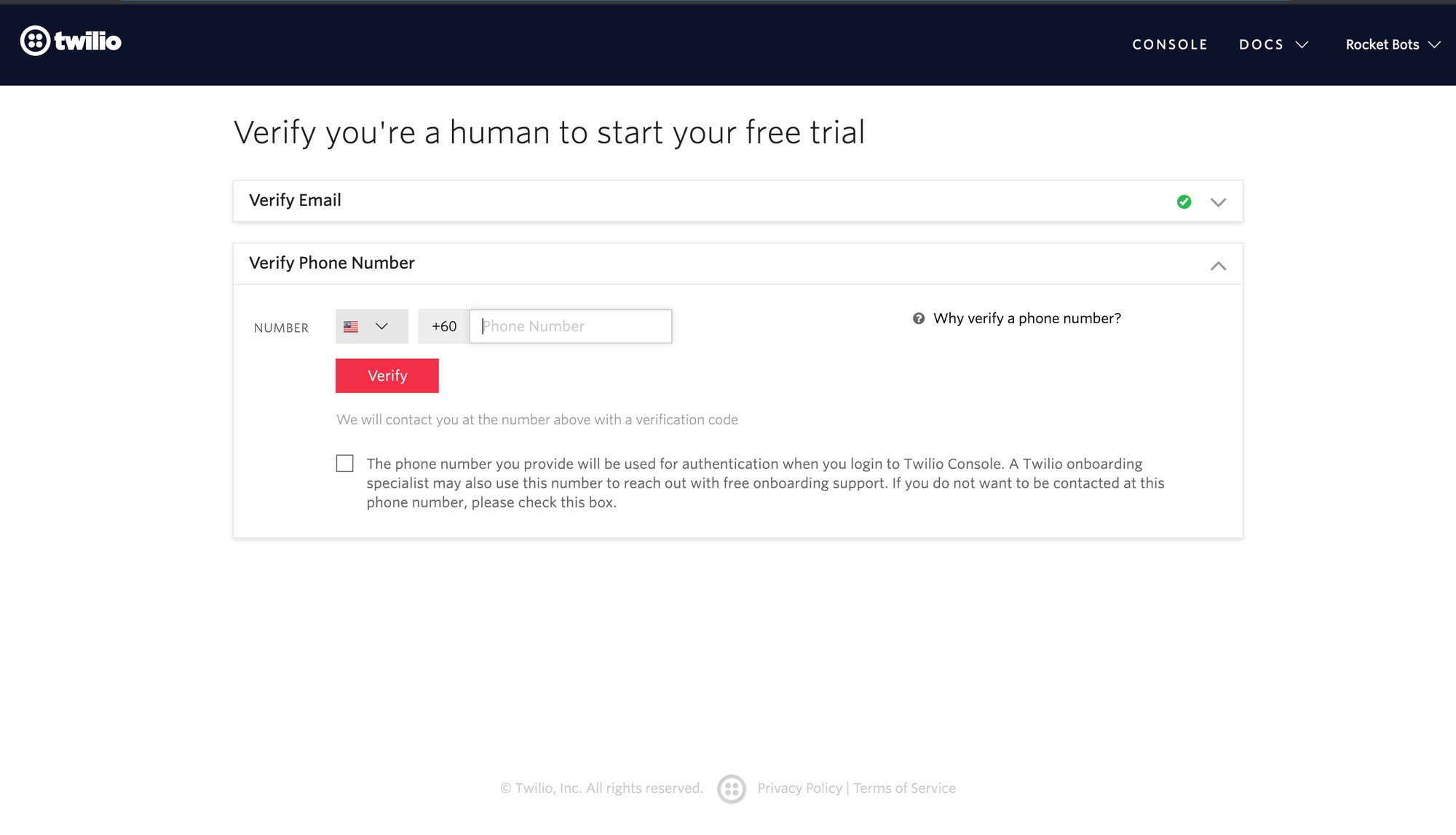
3. Press the Get a Trial Number button on Twilio dashboard. Twilio will recommend a phone number based on your location. If you’re not picky about your Twilio phone number, let Twilio pick your first one.
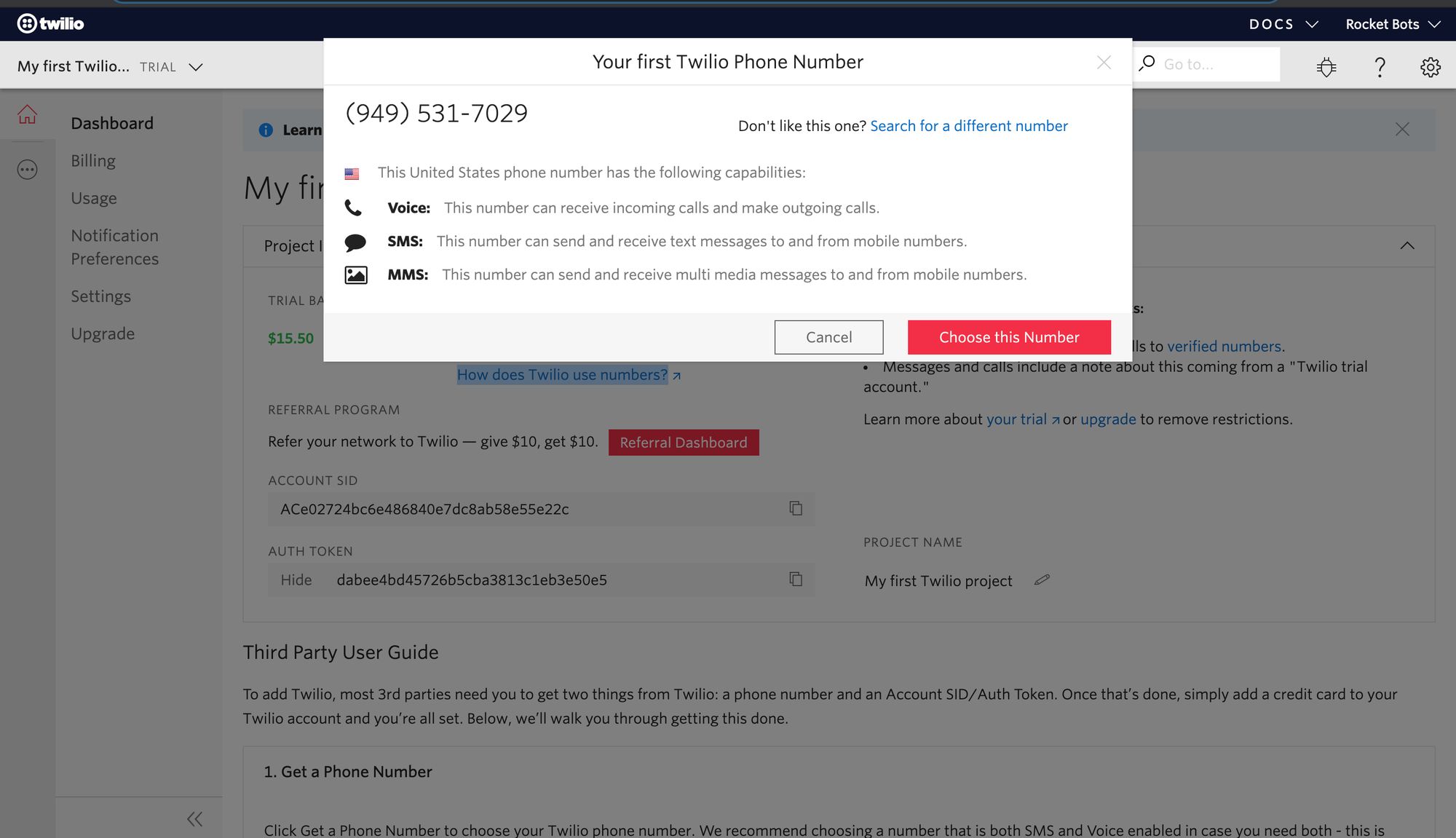
4. Choose another phone number. If you don't like the number Twilio selects for you, choose another phone number that best suits your company's needs. You may select a number from any country available on Twilio.
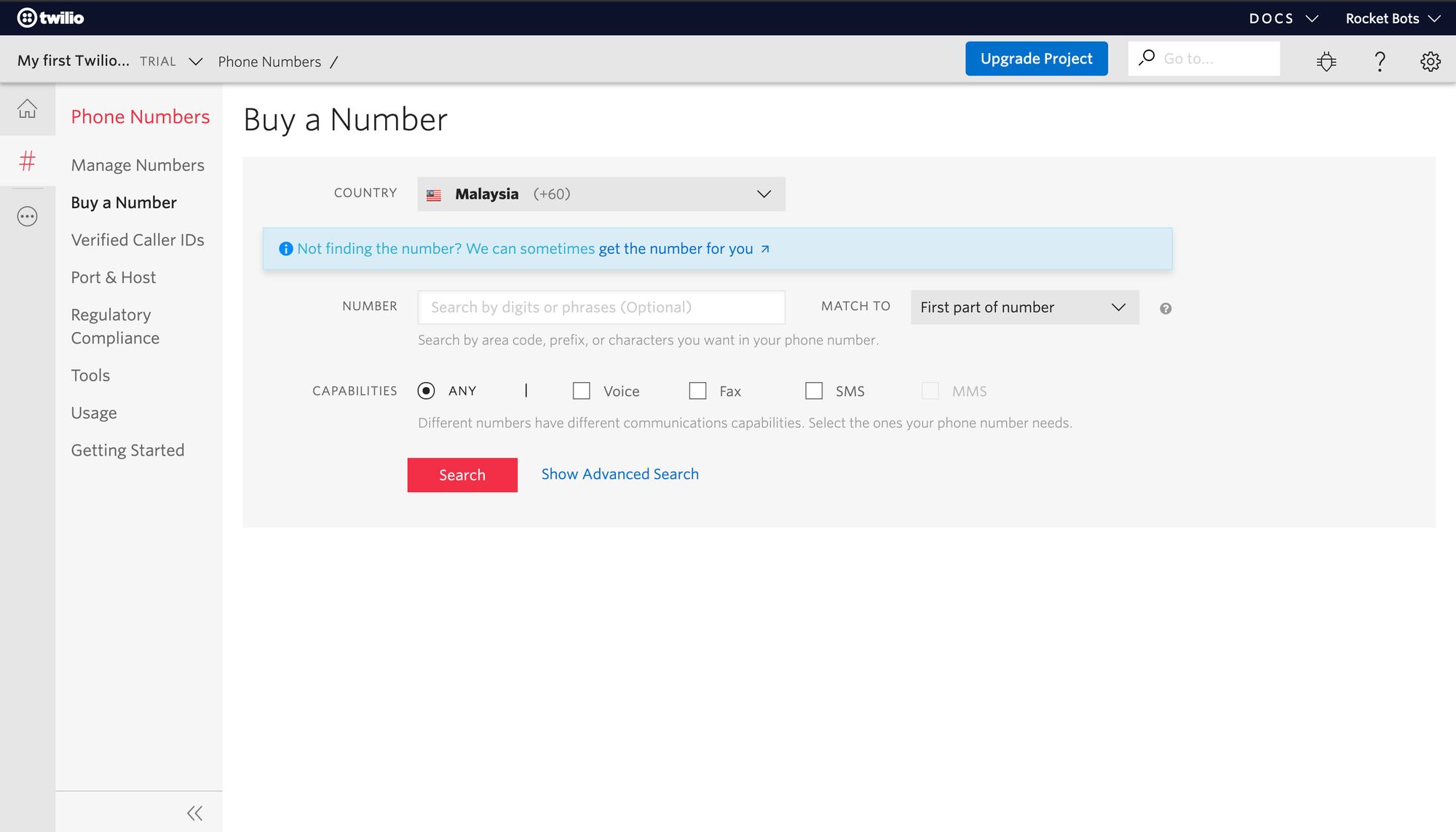
You will not be charged for any Twilio numbers purchased during the free trial, although you may see charges on the Project Usage page. This is just to give you a feel for Twilio's pricing.
5. Connect your Twilio account to a CRM. After you create a Twilio account and a number, you may use a CRM for business text messaging. To connect Twilio to an API, you need Twilio Account SID and Auth Token, which can be found in Settings.

Twilio doesn’t have a messaging console. To start messaging, create a free respond.io account and connect your Twilio account. But you are not ready for SMS business messaging until you read our guide on SMS best practices below.
Turn customer conversations into business growth with respond.io. ✨
Manage calls, chats and emails in one place!
SMS Business: Best Practices
Using SMS for the first time can be daunting. Since SMS interactions are regulated by governments, carriers, and SMS Partners themselves. It can be difficult to know what is allowed and what is not. So we’ve put together some simple best practices.
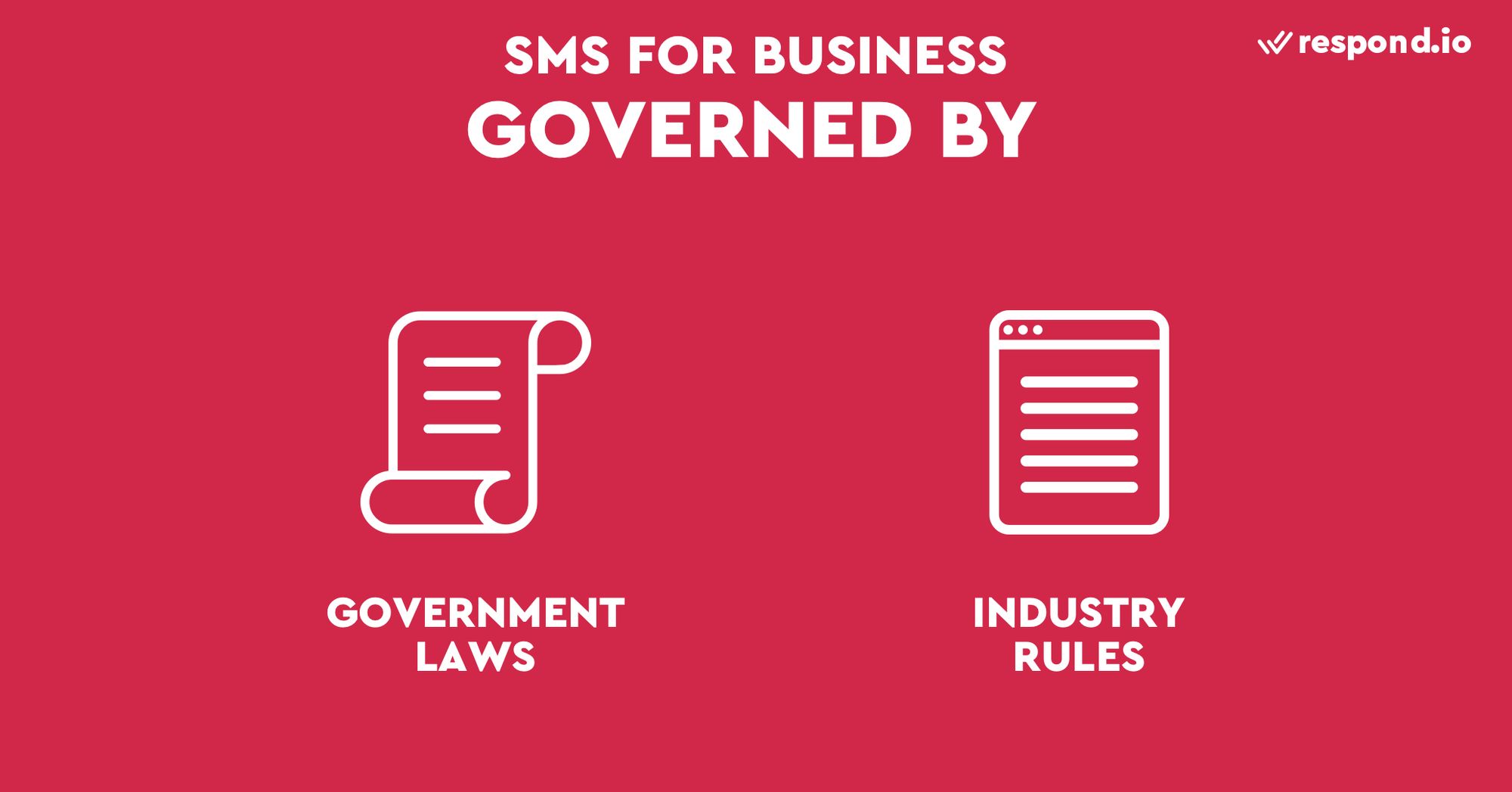
We’ve divided our best practices into two sections. First, we’ll discuss SMS Contact Opt-in & Opt-out strategies. Then we’ll discuss SMS messaging practices and limitations.
SMS Business: SMS Contact Opt-in & Opt Out
Buzzwords like opt-in and opt-out may sound daunting, but the idea is simple. Only send communications to users who want to receive them. SMS Contacts let you know they want to receive messages by opting in and stop receiving by opting out.
Although in some countries there are legal implications for not handling these correctly. The best reason for paying attention to how you handle opt-ins and opt-outs is to avoid annoying your actual customers. Not everyone wants to communicate via SMS.
SMS Business: Contact Opt-in
Opt-in means Contacts need to explicitly consent to receive SMS messages. Just because you have their phone number doesn’t mean they have opted-in. Opt-in requires the Contact to understand the messaging they will receive and agree to it.
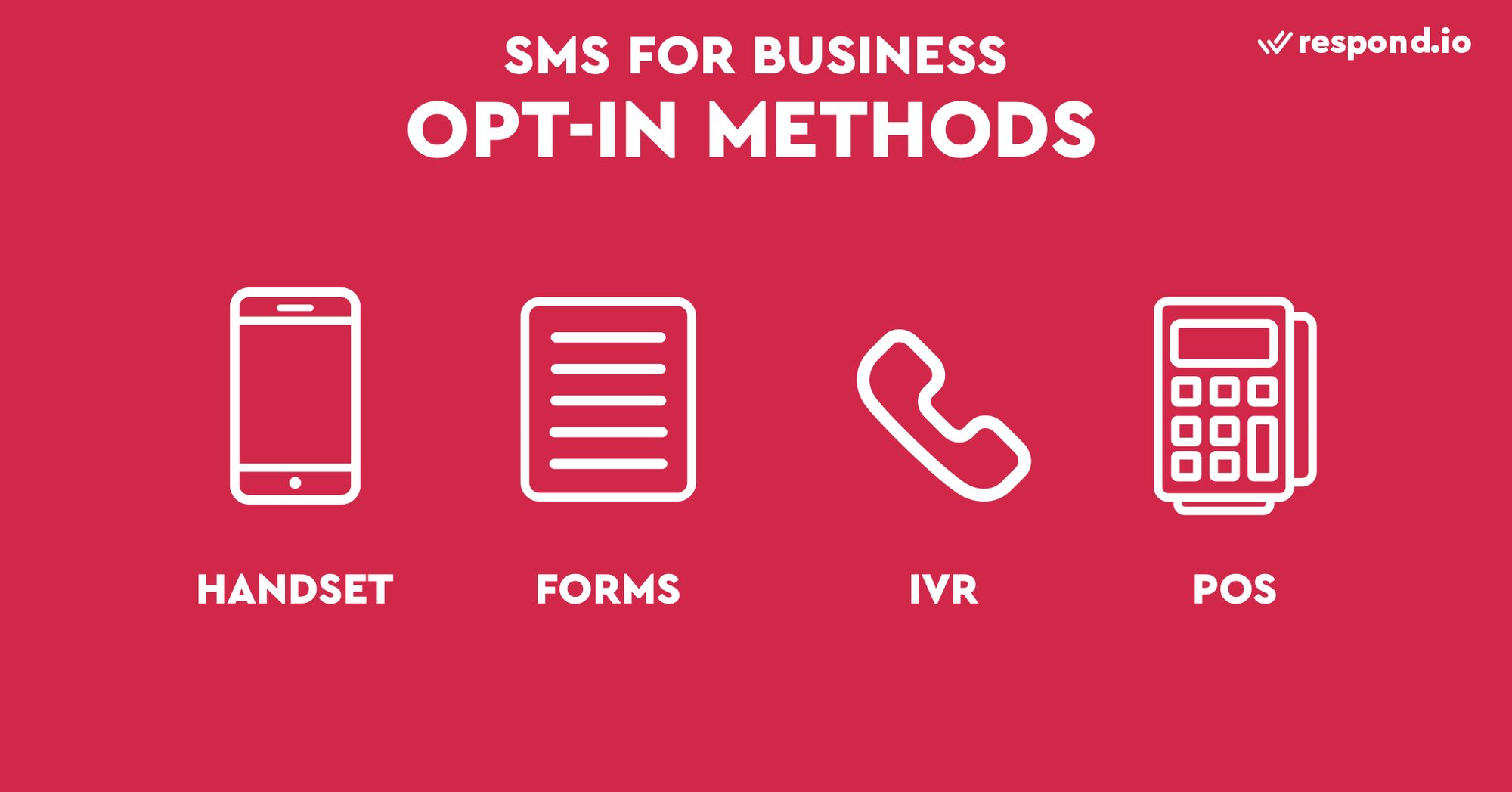
SMS opt-ins can be done via SMS chat or through some other medium. The simplest type is handset opt-in, where Contacts send a business an SMS message first. However, this is not generally the case with SMS conversations.
Businesses usually collect opt-ins through web forms, automated phone systems or at a point-of-sale (POS). POS opt-ins often happens after customers completed their purchases and are asked for their personal information.

To remain compliant, businesses may go the extra mile and establish a double opt-in. Once a customer has opted in, ask them to confirm their consent. This can be as simple as replying with a YES.
Ultimately opt-ins are always required, double or not. Sending unsolicited SMS messages may result in the suspension of number. Ideally, the first message to the Contact should include clear information on how to opt-out.
SMS Business: Contact Opt-out
Once a Contact opts out you’ll need to have a way to stop messaging them. Some SMS providers will have a way to automatically Opt a Contact out of a list when they send keywords like STOP, END, or CANCEL.
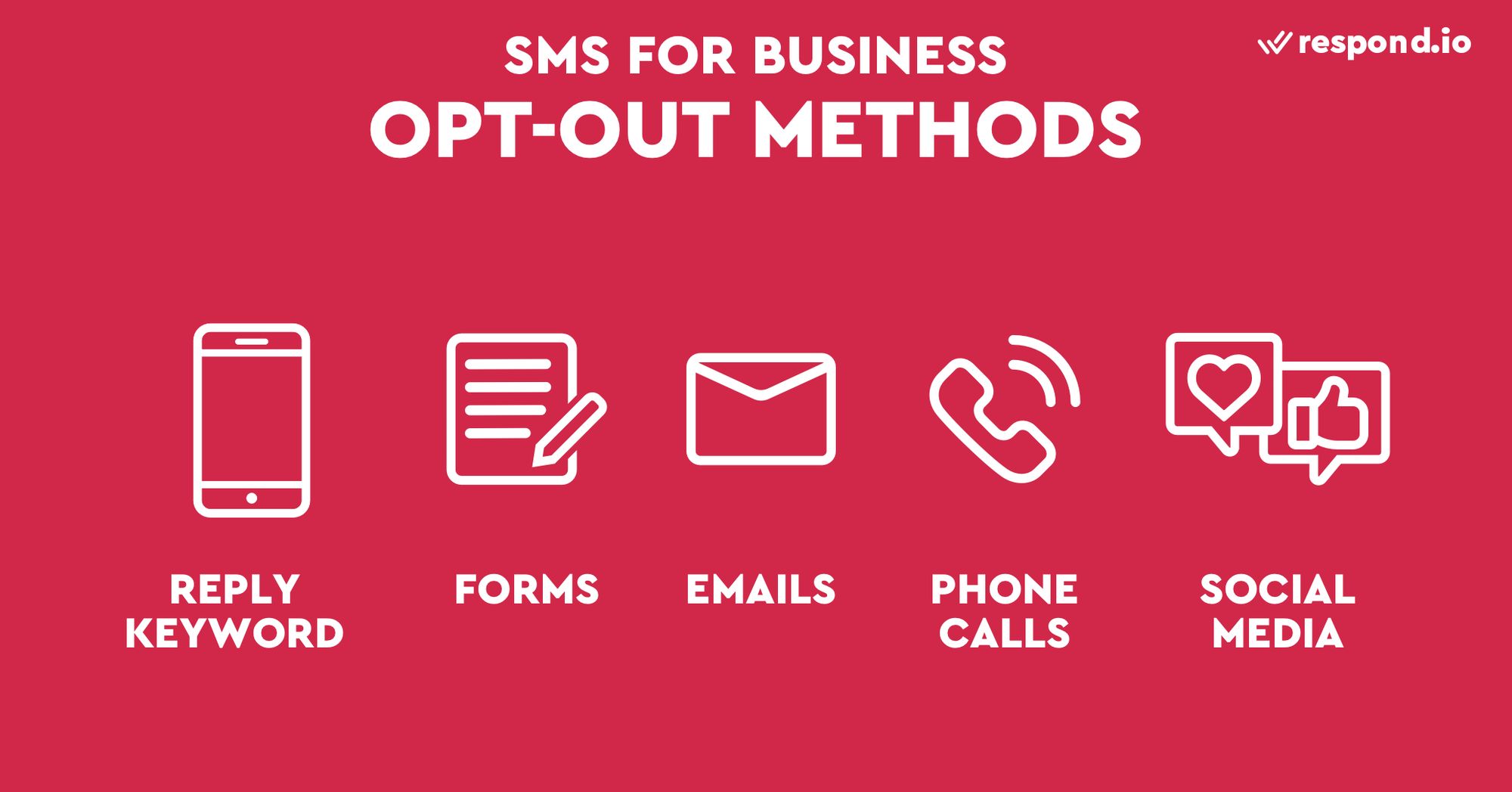
Opt-out can extend to other reply languages apart from English. Some SMS providers allow you to send a customized reply based on the language of the opt-out keyword. After opting out, users can always opt back in by replying START, YES or UNSTOP.
Aside from keyword reply, businesses should honor all opt-out requests made via any reasonable means. This includes but not limited to emails, phone calls, web forms or social media channels.
SMS Business: Messaging Customers via SMS
Messaging your customers over SMS is relatively straight forward. Once you’ve got their number you can send a customer the first message to start the conversation. However, the medium of SMS does have a few limitations you should keep in mind.
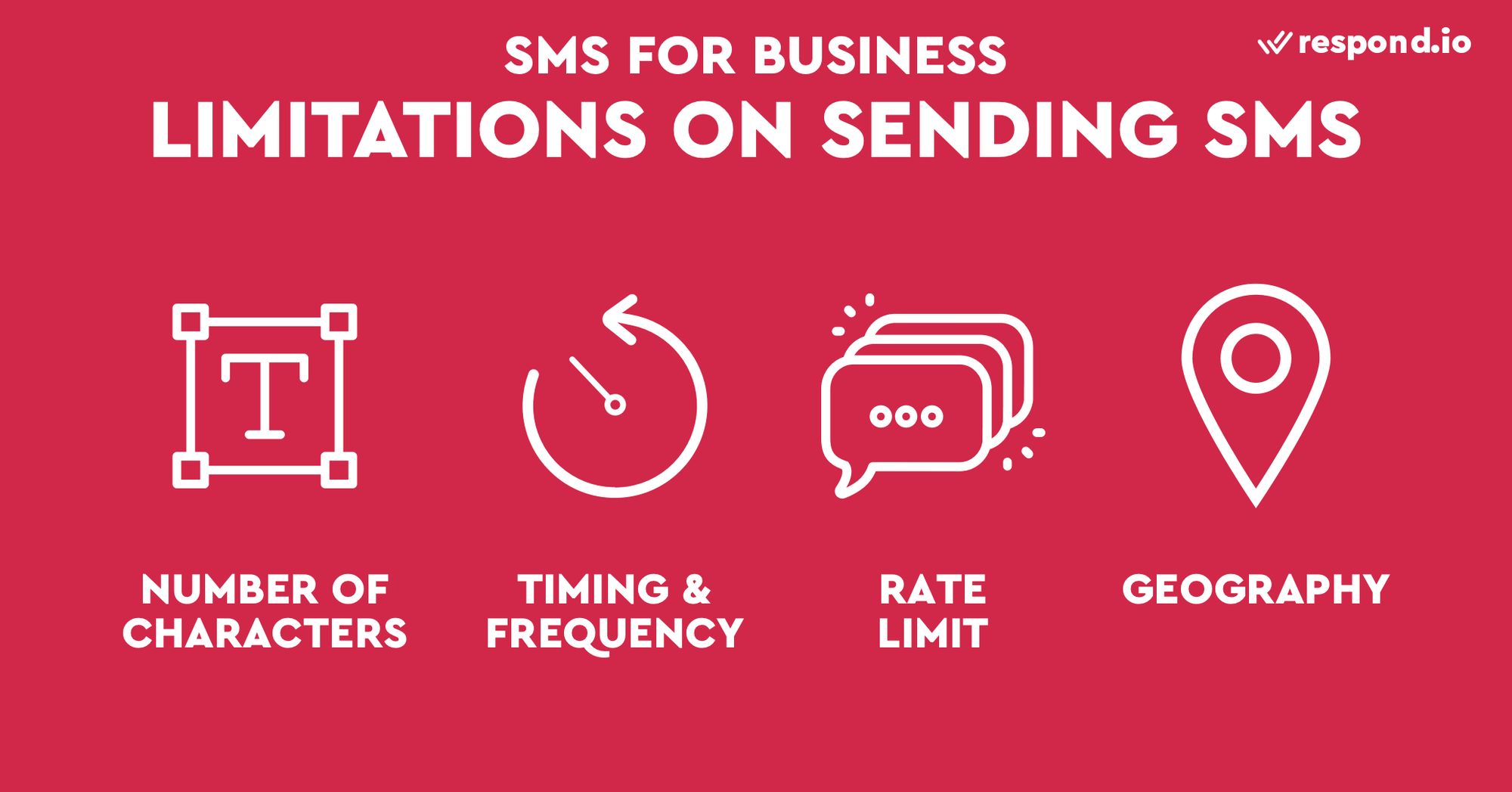
SMS Business: Character Limit
SMS messages have a 160 character limit. Businesses can exceed the character limit when they include certain punctuation marks or non-Latin characters. These special characters use more standard characters, reducing the character limit from 160 to 70.

Exceeding the character limit will cause your message to be segmented into two. Businesses will have to pay double the price, which can be significant when sending a large number of SMS.
Business SMS: Rate Limit Restrictions
Long Codes are the most restrictive type of numbers when it comes to volume. They cannot be used to send SMS broadcasts because it has a limit of 1 outbound SMS per second.

More importantly, SMS sent from a Long Code can be heavily filtered. Delivery may fail when carriers detect broadcasts being sent from a long code. It's not known how many SMS you can send before hitting the filter because the way filtering works is ambiguous.
Business SMS: Frequency and Timing
When it comes to SMS business messaging, less is more. Your customers are more likely to opt-out if they are bombarded with promotional SMS every day. We recommend limiting the frequency of SMS broadcasts to once or twice a week.
The timing of SMS business messaging is just as important. Sending SMS at odd hours will not only annoy your customers, but you may also face legal actions. Some countries only allow businesses to send promotional messages at certain hours or days.
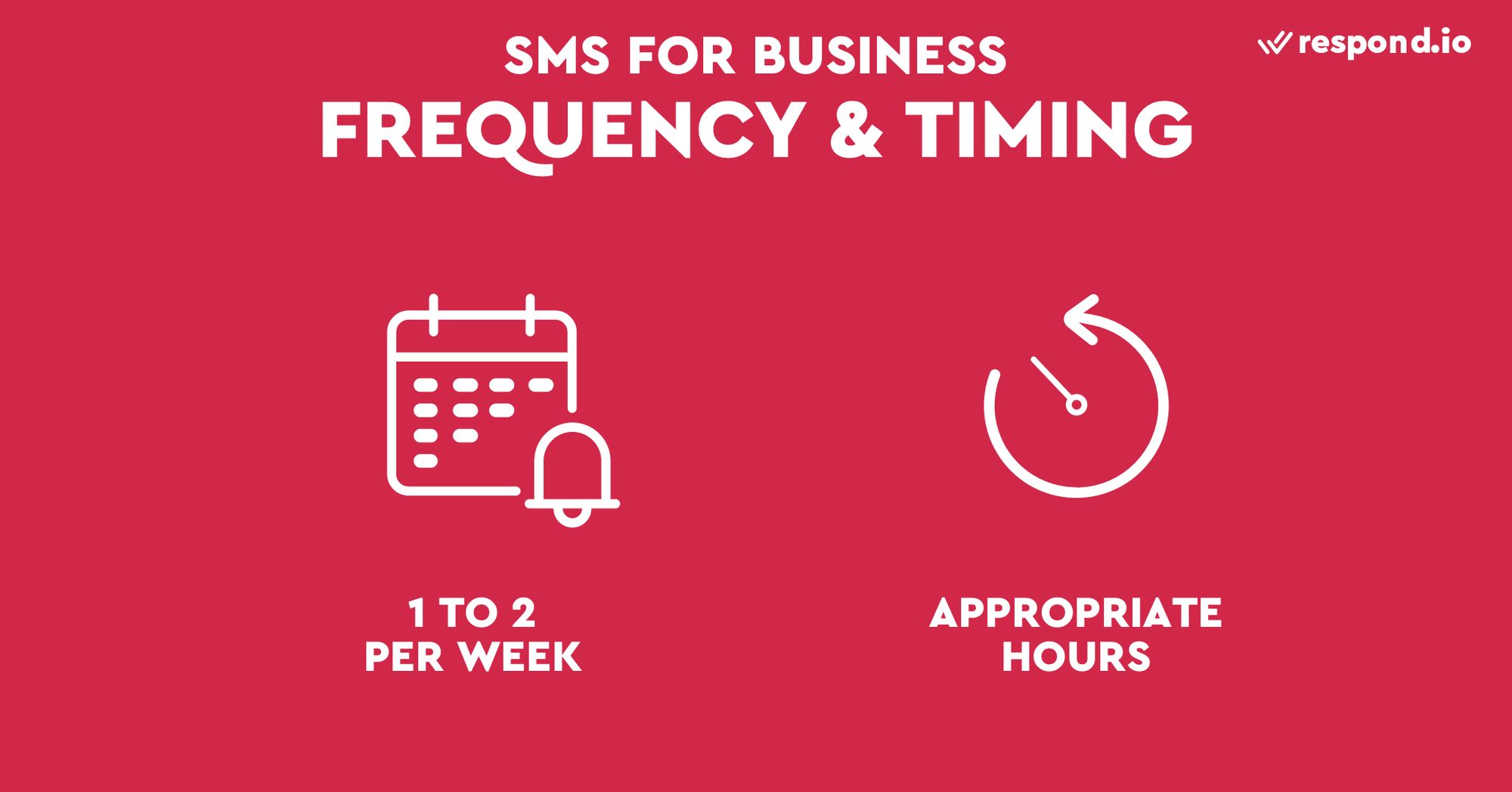
Even in countries without these regulations, the best practice is to send broadcast SMS at appropriate times. Not only it reduces the chance of being blocked, but your customers are also more likely to respond to SMS sent at the right time.
If you have customers in different time zones, you should also take that into consideration. You wouldn’t want to send SMS to customers at the wee hours of the night!
Business SMS: Geographical Restrictions
SMS business messaging is even more complicated when you have international subscribers. There are cross-border restrictions for certain numbers like Short Codes, and 2-way messaging is not always possible.

A Short Code is only able to send messages to local phone numbers. For instance, US Short Codes can only send SMS to US phone numbers. To send SMS internationally, you need to buy a Short Code in the destination country.
International 2-way messaging cannot always be guaranteed. In some countries like India, carriers may change the displayed number on the recipient’s phone. This means replies from recipients will not be routed back to your number.
Business SMS: Infographic

Turn customer conversations into business growth with respond.io. ✨
Manage calls, chats and emails in one place!
Further Reading
If you’re interested in more how-to content about using business messaging apps, we recommend the following articles:






































 Electronics
Electronics Fashion & Apparel
Fashion & Apparel Furniture
Furniture Jewelry and Watches
Jewelry and Watches
 Afterschool Activities
Afterschool Activities Sport & Fitness
Sport & Fitness
 Beauty Center
Beauty Center Dental Clinic
Dental Clinic Medical Clinic
Medical Clinic
 Home Cleaning & Maid Services
Home Cleaning & Maid Services Photography & Videography
Photography & Videography
 Car Dealership
Car Dealership
 Travel Agency & Tour Operator
Travel Agency & Tour Operator




